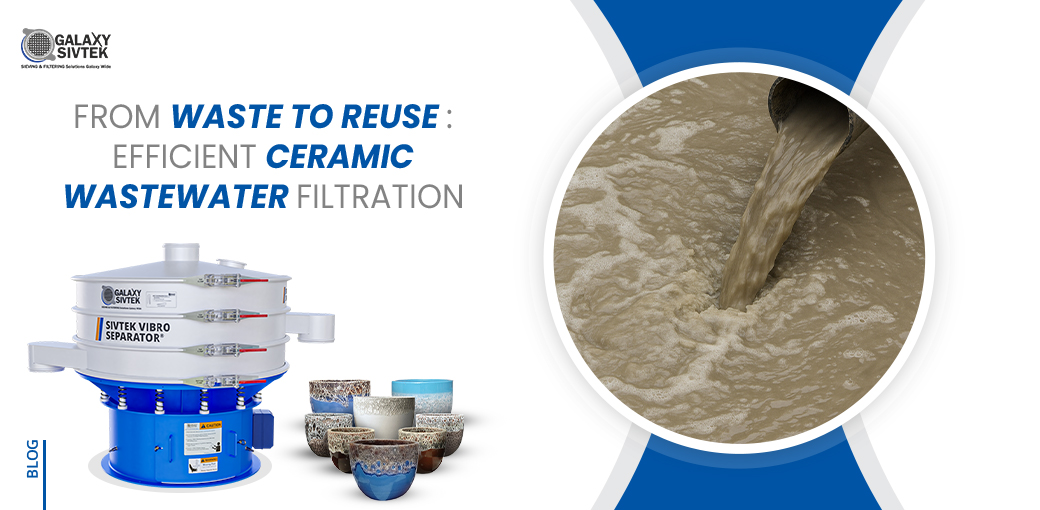
Committed To Quality, Committed To You
In ceramic production, and other industries that rely heavily on abrasives, water is an essential component of just about everything we do—whether it’s used for grinding, polishing, cutting or cooling. But this water doesn’t stay clean for long. It becomes laden with ultrafine ceramic particles and forms a slurry that cannot be discharged or reused without treatment. Efficient filtration is the way to go and vibro sifters have significant role to play in this.
Understanding Ceramic Wastewater and Its Challenges
Ceramic laden wastewater is a dense, abrasive mixture. Not just water, it contains ultra-fine ceramic dust, sharp abrasive particles, and sometimes even chemical residues. Leaving this slurry untreated is damaging the environment, and it breaks down infrastructure. It blocks pipelines, degrades pumps and makes the strongest of filtration systems ineffective in the long term.
That is where the filtration system comes into play.
The Filtration Process: Step by Step
After the slurry has been collected, it will usually go through pre-treatment. Some facilities use settling tanks or chemical flocculants to reduce the density and remove the heaviest solids. However, it is insufficient: Most of the ceramic dust is retained in suspension in the liquid and must be separated from this liquid before the water can be used again or safely disposed of.
This is where our Sivtek vibro separator come into play at a critical mid-point in the process.
The Role of Vibro separator in Ceramic Slurry Filtration
A vibro separator is a type of round vibrating screen which separates solid particles from multi-phase materials such as liquids or slurries. The slurry, in this case, is passed through a vibro screen equipped with a mesh screen ranging from 100 to 300 microns, usually depending on the particle size.
As the slurry flows along the vibrating screen, the ceramic solids are retained on the top while the filtered water passes through the separation process. The result is a two-way separation: usable water that can be sent for further fine filtration or reuse, and ceramic residue that can be collected for recycling or disposal.
Unlike manual sieving or basic filters, vibro separators are continuous, automated, and highly precise. They can manage large volumes of slurry without clogging or breaking down, which is vital in busy industrial environments.
What Happens If You Don’t Use a Vibro Sifter?
If you do not install a vibro sifter, you’re going to disrupt the filtration process. Without mechanical pre-separation:
In conclusion, without a vibro sifter, you’re making fine-filtration systems to work the way they aren’t meant to which causes unnecessary recycling, machine damage and higher operating costs.
More Than Just a Pre-Filter
Perhaps the first thought that comes to one’s mind when they speak about vibro sifters is about a pre-filter. However, it very often is the backbone of the filtration process bridging the gap between rough settling and fine filtration. It helps save energy costs, protect the system from wear and tear, and maintain the sustainability of recovering water that would otherwise be wasted.
Whether you are recovering water for reuse or treating it before disposal – the vibro sifter will ensure that you are empowered to do it efficiently and responsibly.
Conclusion
As environmental regulations tighten and industries push toward sustainable manufacturing; ceramic wastewater management is no longer optional it’s essential. And in that process, a vibro separator isn’t just a machine. It’s your first line of defence against inefficiency and waste.